Qalandiya
The police have overall authority for the checkpoint.
The MP’s are subject to the police, responsible for inspecting those coming from Palestine to Jerusalem. Staff of Modi’in Ezrahi are also subject to the police – it’s the civilian security company which is one of the privatized tentacles spreading throughout the country, responsible for guarding the soldiers and the police officers.
Security staff carry guns like the soldiers, wear ceramic body armor like the soldiers, and their uniforms are so similar to those of the soldiers that an untrained eye may confuse the two. The similarity is probably not accidental.
Given that soldiers have rifles and police have pistols, it’s a strange decision to deploy a duplicate armed force to confront civilians.
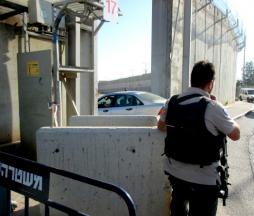
Usually the guards can be seen shadowing a soldier or a policeman.
But they also may exceed their mandate and impose their authority on Palestinians.
That’s what happened when the police decided to close to vehicle traffic the lane from Jerusalem to Palestine and blocked it with movable metal barriers, opened the military gate in the separation wall between A-Ram and Qalandiya and diverted all the vehicles through it. The police explained it was done to regulate the heavy traffic, though what it actually accomplishes is to move the heavy traffic to a location where it’s less visible, at least to them. And when the route to the vehicle checkpoint was empty of cars, one Palestinian woman managed to squeeze her car between the metal barriers and had already reached the middle of the checkpoint, next to where the soldiers were stationed, when one of the guards noticed her. He sprang toward her, stopped her, reprimanded her, confiscated her ID, ordered her to turn back and returned the ID only after he saw she’d obeyed – in other words, made a u-turn and drove back whence she came.
Something similar occurred when a guard accompanying the policeman directing traffic toward the open gate noticed a person on foot who’d arrived from the other side of the wall and walked holding his small son’s hand, and just when the two of them were about to cross the border between there and here, between A-Ram and Qalandiya, the guard hurried toward them and chased them back whence they’d come.
# # # # # # # # #
On the main road, about fifty meters before Adam Plaza, on the road from Qalandiya to Highway 60, Border Police soldiers conducted what’s called in military parlance Interrupting the routine, or making them feel persecuted.
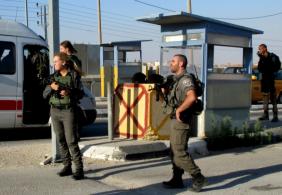
They stopped vehicles, ordered the drivers to the roadside, and if a taxi happened to be selected one of the soldiers entered and collected the passengers’ IDs.
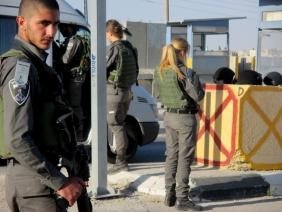
There didn’t seem to be a standard procedure, and watching from the side we weren’t able to predict who’s next. “I’m prohibited from telling you; it’s secret” said Shmuel, the officer commanding the unit.
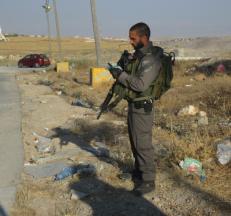
Shmuel transmitted to someone over the radio the ID numbers of the people whose IDs were collected, and waited.
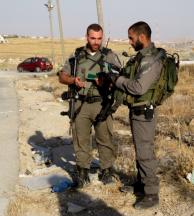
When he received an answer from the person on the other end Shmuel gave the stack of IDs to one of his soldiers who then returned to the detained vehicle and gave the IDs back to their owners and allowed the driver to continue.

Drivers of private cars weren’t exempt, nor were residents of Jerusalem whose vehicles bore yellow license plates. In such cases the vehicle as well as the IDs was confiscated and its interior was comprehensively inspected.
